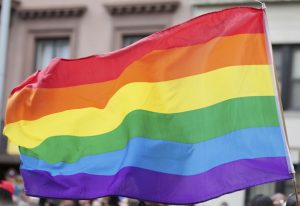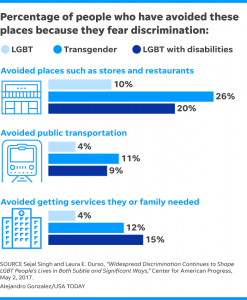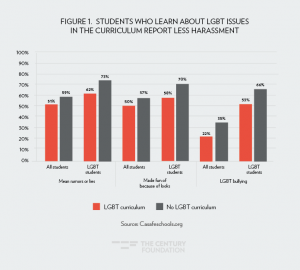
Table of Contents
What is LGBTQIA?
LGBTQIA is an acronym for:
- L – Lesbian (Women who love or is sexually attracted to other women.)
- G – Gay (A person who has sexual and liking fondness attitude toward people of the same gender.)
- B – Bisexual (A person whose major sexual and fondness attitudes is toward people of the same and other genders, or towards people irrespective of their gender.)
- T – Transgender (Transgender is used most often as an umbrella term that defines a wide-ranging familiarity of people whose gender identity differs from the time of their birth.)
- Q – Queer (One definition of queer is abnormal or strange. Historically, queer has been used as an epithet/slur against people whose gender, gender expression and sexuality do not conform to dominant expectations.)
- I – Intersex (Intersex is a common term used for a person born with diverse conditions and the sexual framework does not fit the exact descriptions of female or male identity.)
- A – Asexual or allied
- Asexual orientation is general categorized by lack of feeling sexual attraction or a desire for partnered sexuality.
- Allies are a person who is identified as a straight individual but advocates people in the LGBTQIA community.
How are LGBTQIA different from each other?
- The Gay word can be used in two different ways:
- First and usually, the person who is particularly attracted to their same gender i.e. Male-Male, Female-Female, and secondly which is used commonly to specify a male who is attracted to other males completely.
- Lesbians are women who are sexually attracted to women but they are mostly referred to as being gay women too.
- Bisexual people are sexually attracted to both men and women. Similarly, a lesbian and a bisexual woman are both attracted to women, but bisexual women are also attracted to men, wherein lesbians are not.
- Asexual individuals are those people who are attracted to neither men nor women sexually but may likely to have relationships.
- Queer are individuals who may not be recognized as men or women in the society and referred to mention as ‘they’ or ‘them’ rather than ‘he’ or ‘she’ irrespective of the sexuality they hold.
- Transgender people are identified as a gender further than the one they were given at birth.
- A person who was born as a male at birth but recognizes as a female is a transgender girl or woman.
- A person who was female at birth but classifies as male is a transgender boy or man. Someone who does not sense they appropriate belongs into either category or are somewhere in between, would be reflected non-binary.

Different challenges faced by LGBTQIA:
1. Negative attitude and refusal by the family
Negative attitude of the family members towards the sexuality of LGBTQIA, rejection, lack of acceptance and excommunication have major impacts on children, which leads to increase conflict and violence.
2. Social Exclusion and Marginalization
- Due to lack of family support, the society abuse LGBTQIA based on their sexuality.
- They are forced to terminate from the society that makes them more vulnerable.
- As a result, they face various kinds of violence along with discrimination and hatred that hampers their mental health.

3. Harassment
- LGBTQIA community have faced numerous harassments since their identification in the world on a regular basis.
- Trolls, jokes, and homophobic comments by their friends, community people and co-workers along with physical violence is not uncommon in their life.
4. Victims of Crimes
- People of LGBTQIA are regular suffers of discrimination, harassment, rejection and lack of family support.
- They are also the target for violence, crimes, and murders based on race, sexuality, and identity.
- The feeling of hatred and stigma among general population regarding LGBTQIA is also high.
5. Psychological Problems
Due to range of factors including discrimination, inequity, inequalities, violence and lack of support LGBTQIA community are facing various mental health problems like anxiety, depression, stress disorder, suicide ideation, loneliness, suicide attempt, and suicide plan.

6. Legal injustice and criminalization
Due to various cultural barriers and perspectives, homosexuality is considered a crime and illegal. Therefore, many countries have enforced strict rules and regulations against homosexuality that includes punishments that vary from fines, imprisonment to the death penalty.
Challenging Facts About LGBTQIA:
- LGBTQIA individuals are more than twice as likely as other individuals to have a mental disorder
- Among bisexual individuals, suicide attempts are 3 times more likely than the straight individuals
- These minority groups have higher risk of substance use disorders than the straight individuals
- LGBTQIA people (sexual minority youths) are more bullied than other non-sexual minority youths.
Mitigation measures of LGBTQIA challenges:
- Increased awareness and sensitization among general population regarding LGBTQIA
- Promotion of activities representing moral support to LGBTQIA
- Active involvement of community service organizations (CSOs): LGBTQIA rights should be activated effectively to focus on the current issue faced by LGBTQIA people
- Establishment of LGBTQIA friendly service center to create an environment where they could be treated as normal people.
- State and local response on bullying and harassment of gay and transgender youth.

- National response on LGBTQIA equity and equality in health care, employment and education.
- More research should be done on the factors affecting LGBTQIA health needs, education, health, violence, discrimination, employment, and bullying.
- Raising up voices for the LGBTQIA community
- Establishment of training centers specifically to LGBTQIA community would be a possible solution for LGBTQIA in order to reduce discrimination in workplace or school.
- Cyberbullying, harassment regarding gender and sexuality should be focused on supportive policies for the LGBTQIA community by the higher authorities.
References and For More Information:
http://www.isna.org/faq/what_is_intersex
https://lgbtqia.ucdavis.edu/educated/glossary
https://www.cbsnews.com/news/the-difference-between-sexual-orientation-and-gender-identity/
https://www.slideshare.net/IPGCounseling/challenges-faced-by-the-lgbt-community-63913776
https://genprogress.org/five-ways-we-can-end-discrimination-and-harassment-against-gay-and-tra/
https://work.chron.com/solutions-lgbt-discrimination-workplace-school-23934.html